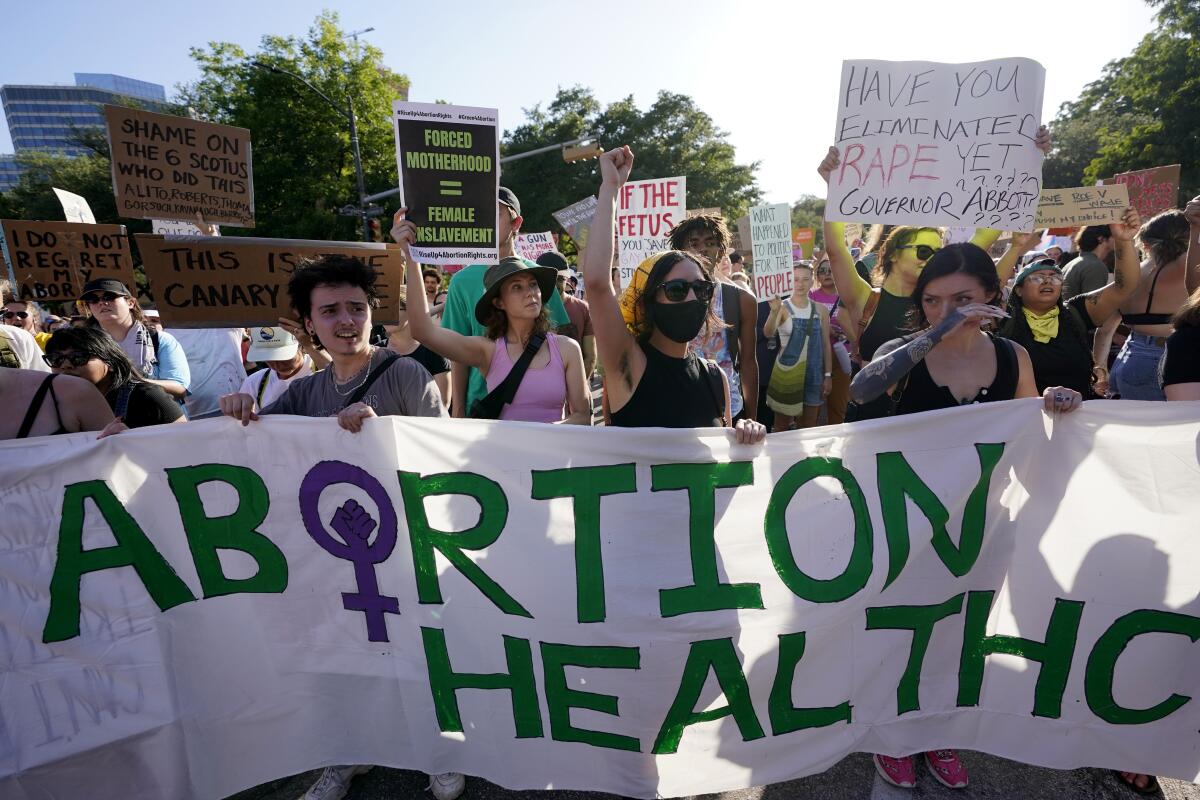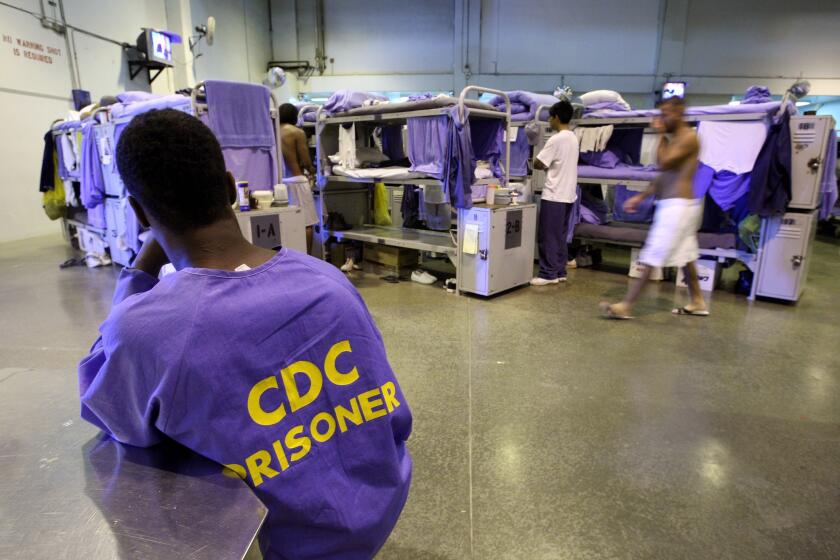California saw a surge in abortions after Dobbs. Providers are bracing for more

- Share via
After the Supreme Court overturned the Roe vs. Wade decision in 2022, jeopardizing abortion access for millions nationwide, California emerged as a “hot spot” and saw a surge in procedures — an influx probably due in part to out-of-staters facing new restrictions and looking for care.
Tuesday’s decision by the Arizona Supreme Court that aims to impose a near-total abortion ban in the neighboring state has put Southern California providers on alert and reignited leading state Democrats’ efforts to provide a “safe haven” for reproductive rights.
“We stand with the people of Arizona, and all those who live in states that have enacted dangerous abortion bans and restrictions. No matter what comes, we remain steadfast in our resolve to protect and expand access to safe and legal abortion care for all,” said Darrah DiGiorgio Johnson, president and chief executive of Planned Parenthood of the Pacific Southwest.
The regional Planned Parenthood operates clinics in Imperial, Riverside and San Diego counties, where 10% of patients are from outside California. Arizonans were already traveling to California for abortion, because before this week’s ruling the state banned abortions at 15 weeks, but DiGiorgio Johnson said they are now in “an even more precarious position.”
The latest decision reinstated a law from 1864 that bans abortions except when the woman’s life is at risk. Advocates are leery of what is to come nationally if Donald Trump is reelected president and if the Supreme Court rules to ban mifepristone, the prescribed, at-home drug used in the vast majority of abortions.
“It’s too soon for us to know exactly what this ruling will mean for us,” DiGiorgio Johnson said of the Arizona decision, but said staffers are taking “necessary steps” to ensure they’re ready to support a potential influx.
Abortion data can be hard to pin down, as advocates warn of undercounting because of patients who decline to share information over privacy concerns. However, some research has shown surges in California after the U.S. Supreme Court’s Dobbs vs. Jackson decision two years ago, which rolled back federal abortion protections.
In May 2022, a month before the Dobbs decision, California reported 13,680 abortions, according to national data from the Society for Family Planning. In May 2023, that number climbed to 15,550.
California joined Illinois and Florida as the states with the largest cumulative increases in abortion over the 15-month span after Roe was struck down, according to the report. The numbers have fluctuated, peaking at more than 16,000 in March 2023, according to the report, which tracked abortions in the state from April 2022 to September 2023.
Planned Parenthood Affiliates of California reported that medication abortions by their clinics increased by 18% statewide from June 2022-23.
In another report, the Guttmacher Institute — a nonprofit research organization that supports abortion access — estimated that more than 5,000 abortions were provided to patients traveling to California from other states in 2023.
California has done more than most states to prepare for a post-Dobbs world. Gov. Gavin Newsom and state lawmakers have dedicated more than $200 million to reproductive healthcare since 2022, launching a state abortion database, covering uninsured abortions and providing funding for logistics such as travel for rural patients.
California voters already approved a ballot measure that secured abortion rights in the state Constitution — a move that supporters in other states are now scrambling to replicate.
Newsom slammed the Arizona court decision, chiding the ruling for making no exceptions for rape or incest.
“THIS is the ‘future’ the GOP are fighting for,” Newsom said Tuesday on the social media platform X, formerly Twitter. “Abortion rights. Civil rights. Voting rights. They want it all wiped away. Remember that in November.”
State officials are “working in close coordination” with the Arizona governor’s office to ensure that residents in that state know they can seek care in California, according to Newsom spokesperson Brandon Richards.
“The State, including the Governor’s Office, continues to have ongoing conversations at the highest levels around potential action — both proactive and reactive — to ensure Reproductive Freedom remains a reality in California as threats to access continue,” Richards said in an email to The Times.
California Republicans have criticized Newsom’s focus on red state abortion policies, saying he should stick to the needs of his own state’s residents, and have warned against any more spending on the issue as the state faces a multibillion-dollar budget deficit.
Sue Dunlap, president and CEO of Planned Parenthood Los Angeles — one of the largest abortion providers in the country — said concerns about infrastructure and resources for Californians being at risk because of out-of-state need is a “false narrative.”
Planned Parenthood Los Angeles saw an approximately 20% increase in abortions after Dobbs, and a majority of those involve California patients. The clinics have long served non-Californians traveling to the city for abortions even before the Dobbs decision, Dunlap said.
“To me, that tells the story of when we increase access, period, it lifts all boats. It creates the opportunity for everyone to get care in a timely way,” she said Thursday. “In California over these last couple of years, we’ve really increased access. We really heightened our awareness.”
But the work in California isn’t over, she said. Although Newsom has passed laws to support abortion doctors in red states, there are still legal unknowns about interstate policy fights and the fallout of a potential national ban.
Dunlap said that Californians should not take abortion access for granted or downplay decisions on the horizon.
“I have to say as someone who runs the day-to-day operations of an organization that provides a lot of care ... I resent the optimism,” she said. “It’s our job as healthcare providers to be prepared for the worst-case scenario. That’s what’s going to make us ensure that we in California are able to take care of the potential surges.”
More to Read
Sign up for Essential California
The most important California stories and recommendations in your inbox every morning.
You may occasionally receive promotional content from the Los Angeles Times.











